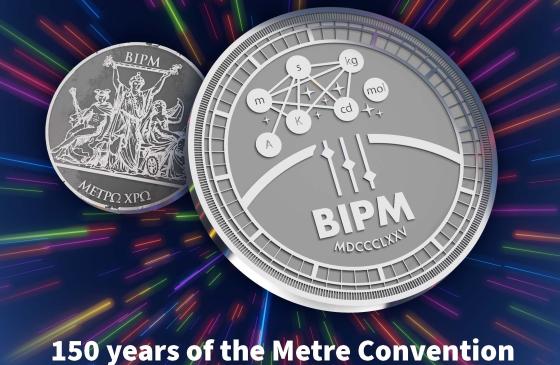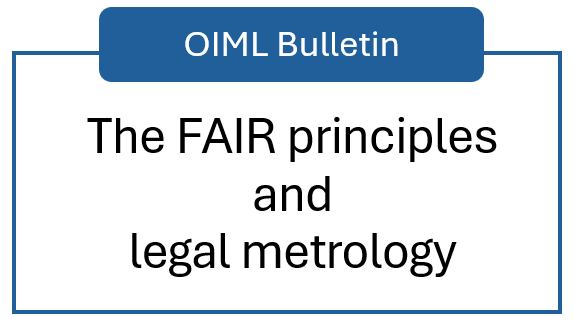OIML BULLETIN - VOLUME LXV - NUMBER 3 - JULY 2024
e v o l u t i o n s
The importance of metrology:
From early civilization to digitalisation – the Indian perspective
Dr Mukesh Kumar
Deputy Controller, Legal Metrology
Kanpur Zone, Uttar Pradesh, India
The evolution of measurement systems is deeply intertwined with the unfolding tapestry of human history. From the invention of the wheel to the discovery of fire, the ability to quantify and measure has been a cornerstone of human advancement. It has evolved significantly over the centuries, from primitive measuring tools to modern digital and precision instruments.
The earliest known uniform systems of weights and measures were observed sometime in the Fourth and Third millennia BC among the ancient peoples of Egypt, Mesopotamia, and the Indus Valley, and perhaps Elam (in Iran) also developed the first measurement systems which have reflected in the country’s architecture, folk, and metallurgical artifacts. A complex system of weights and measures was adopted by the Mauryan empire (322–185 BCE), which also formulated regulations for the usage of this system.
Sher Shah Suri issued the Rupiya coin and fixed standard weights and measures all over the empire. This coin, introduced by Sher Shah Suri, weighed 178 grains and was the precursor of the modern rupee. There was strict punishment for using false weights under the regime of Ala-ud-din Khilji.
Later, the Mughal Empire (1526–1857) used standard measures to determine land holdings and collect land tax as a part of Mughal land reforms. The Indus Valley civilization developed standardized weights and measures (some as accurate as 1.6 mm), also known as the Harappan Civilization. As societies began to trade, the purpose of agriculture, and the construction of monumental structures, together with the need for standardized measurements became apparent. Formal metrication in India dates back to 1 October 1958 when the Government of India adopted the International System of Units (SI).
With the development of its area-specific standards for lengths, areas, volumes, and masses, the development of manufacturing technologies, and the trade between communities and ultimately across the globe, standardized weights and measures became critical. Starting in the 18th century, modernized, simplified, and uniform systems of weights and measures were developed, with the fundamental units defined by ever more precise methods in the science of metrology. Ancient Egyptians had anticipated the spirit of the present-day system of legal metrology, standards, traceability, and calibration recall. With this standardization and uniformity of length, they achieved very high accuracy. The Great Pyramid of Giza was constructed to stand roughly 230.3 m. Using cubit sticks, the builders were within 11.5 cm - an accuracy of 0.05 %! It is therefore clear that metrology dates back to the oldest human activities and its essential elements are still present today. Greek philosophers and mathematicians such as Pythagoras and Euclid contributed to the development of geometric principles and the concept of accuracy in measurement. Visionaries such as Leonardo da Vinci emphasized the importance of accuracy in scientific drawings and measurements. This era also saw the evolution of traditional measurement systems into more scientific and precise approaches. The metric system, a revolutionary development, was conceived during this period.
Modern metrology has its origins in the political will and consciousness to standardize units in France during the French Revolution when a length standard derived from natural sources was proposed. This resulted in the establishment of the decimal-based metric system in 1795, which established a standard for other types of measurements. The Industrial Revolution brought about significant changes in the world of metrology. As factories and industries sprang up, the need for standardized measurements became paramount. Metrology played a pivotal role in ensuring the quality and interchangeability of machine parts, spurring industrial growth. Many nations have recognized the importance of uniform measurement standards for trade and exchange resulting in the formation of National Metrology Institutes, such as the Bureau International des Poids et Mesures (BIPM) located in Sèvres near Paris, which laid the groundwork for international standardization and promoting a uniform global measurement system.
The word metrology derives from the Greek words ‘metron’, and ‘logos’ means the study of measurement which is a vital component in the field of trade and commerce, manufacturing, engineering, science, and technology. Metrology is used to validate and verify pre-defined standards. These standards are the bedrock of metrology and as such, are tested and verified against a recognized quality system by certified laboratories. Legal metrology is the branch that looks after the regulatory aspects of measurement and measuring instruments. Before manufacturing starts, metrological instruments are used to calibrate that will be used during production, which helps to ensure accurate and precise measurement. Metrology allows manufacturers to produce products more accurately, more quickly, and to a higher standard. These benefits are passed on to consumers as products become less expensive to purchase and are made to a higher quality to provide accurate measurements that impact our economy, health, safety, and general well-being.
The Metre Convention (in French: Convention du Mètre), also known as the Treaty of the Metre, was signed in Paris on 20 May 1875 by representatives of 17 nations which agreed to promote the Metric system. The Treaty created the International Bureau of Weights and Measures (BIPM), in order to coordinate international metrology and develop an internationally recognized measurement system. The international prototype of the metre and the kilogram was kept at the BIPM laboratory.
In 1957, India signed the “Metre Convention Treaty” soon after the Standards of Weights and Measures Act of 1956 was passed by the Parliament in December 1956 with a firm decision to establish uniform standards and modernize its weights and measures, gradually leading to the exclusive use of the metric system. The National Physical Laboratory (NPL)is one of the earliest national laboratories set up on 4th January 1947. Being a National Measurement Institute, NPL is the custodian of the National Prototype of the meter and the kilogram. Regional Reference Standard Laboratories (RRSL) were set up to compare and verify the Secondary Standards of State Laboratories and subsequently Working Standards compared with Secondary Standards for verification of weights measures used by traders.
Governments have an important role to play in standardizing weights and measures to build trust among buyers and sellers so that commercial activity flourishes in society. Indian policymakers understood this since the days of the Indus Valley civilization, Even the Arthashastra by Kautilya has a detailed chapter on the creation of a reliable system of weights and measures and its enforcement by a Superintendent of Standardization. In the Indian constitution, the responsibility for the establishment of standards of weights and measures lies with the Union government under Entry 50 of the Union List under the Seventh Schedule of the Constitution of India. It was shifted from the State List to the Concurrent List under the 42nd Amendment to the Constitution in 1976. At present the Legal Metrology Act, 2009 accordingly divides up the responsibilities for the establishment and enforcement of these standards between the union and state governments and regulates the use of weights and measures and related services across the Nation. The 2009 Act replaced two legislations - Standards of Weights and Measures Act, 1976 and the Standards of Weights and Measures (Enforcement) Act, 1985.
In 1972, a Committee was set up under the chairmanship of Mr. S K Maitra (Joint Secretary in the Law Ministry) to review the Standards of Weights and Measures Act, of 1956, and thereafter the Act of 1956 was replaced by the Act of 1976.
With the commencement of the SOWM Act, 1956 the following states have also had their enforcement Act: Uttar Pradesh in 1959, Jammu & Kashmir in 1961, Bombay in 1958, West Bengal in 1959, Bihar in 1960, Orissa in 1958, Kerala in 1958, Himachal Pradesh in 1969, and Madhya Pradesh in 1959. The Bombay Weights and Measures Act was passed even before independence, i.e. 1932.
India has always been a pioneer in promoting a uniform measurement system. After the passing of the 1956 Act, the major challenge was to be ready for metric conversion in the country. During the first phase of the transition, conversion from the non-metric system to the metric system was promoted in school teachings. The use of the metric system was introduced in industry, railways, oil companies, hospitals, and higher education, and the revenue department implemented the conversion of land with the enactment of Standards of Weights & Measures (Conversion of Land), Rules, 1960 and we witnessed the changes from gaz and Bhiga to acres and hectares. Seers-Mann changed to kg, miles to kilometres, square feet to square metres, etc. and the use of metric units became widespread. The 11th CGPM (1960) adopted the name Système International d’Unités (International System of Units) which comprised 7 base units and derived units.
The 26th CGPM took place in November 2018, and approved several significant changes to redefine the base units to build a system that would be “uniform and accessible worldwide for international trade, high technology manufacturing, human health and safety, protection of the environment, global climate studies and basic sciences stable in the long term, internally self-consistent, and practically realizable”.
Thus, four of the base units acquired new definitions: the kilogram, ampere, kelvin, and mole. The definitions of the other three base units were reworded to emphasize their dependence on their corresponding defining constants. The most substantial change was how the kilogram is defined. The kilogram is now defined in terms of the Planck constant rather than as the mass of the International Prototype of the Kilogram held at the BIPM in France.
For the training of legal metrology officers, the Indian Institute of Legal Metrology, Ranchi was established in 1974 (earlier training institute in Bihar 1962). An extensive publicity campaign was carried out in urban and rural areas through documentary films, seminars, posters, newspapers, wide distribution of conversion tables, etc. The first of October 1960 was a landmark in the introduction of metric weights and measures in India. Licenses became mandatory to manufacture, sell, and repair metric weights and measures. The use of verified metric weights became compulsory on that day in certain notified areas, industries, trades, and regulated markets all over the country. Dimensions in length, width, height, etc for day-to-day household accessories were laid down.
The Legal Metrology (Packages Commodities) Rules, 2011 regulates the sale of pre-packaged commodities and ensures that customers who buy products sealed in a package have information about the contents before they purchase. The rules achieve this objective by specifying a mandatory declaration and in what manner it may be written to apply to all pre-packaged products.
To harmonize and promote a worldwide uniform measurement system, Regional Metrology Organisations (RMOs) such as WELMEC, SIM, AFRIMETS, APMP, APMLF, GULFMET, APEC and COOMET work in association with the OIML. Recently, India became the 13th country in which an OIML Issuing Authority can issue OIML certificates, becoming a torch bearer to identify and promote the economic and social benefits of the metrological system.
Ancient measurement tools laid the groundwork for the tools, units, and techniques that would later be adopted by the International System of Units (SI) to form the metric system and the digital measurement system. Many of these tools have been improved and refined to the point where their original forms are still in use today. The traditional weighing and measuring system has evolved from being mechanical to highly accurate digital software-controlled measuring instruments. The evolution of the digital age, digitalization or digital transformation of legal metrology, and the implementation of OIML Recommendations is a new approach to redefining metrological services concerning EoDB and consumer protection. Digital technologies have many benefits for legal metrology, including overcoming barriers to innovation caused by regulations, better coordinating legal processes, reducing development costs, and minimizing the time to market innovative products and services. Digital technologies such as embedded systems, the Internet of Things, cloud computing, blockchain, and big data concepts have matured significantly in recent years. They have also facilitated new technology fields and data-driven markets, including Industry 4.0, machine learning, and artificial intelligence-based smart services provided by digital platforms. The OIML is extensively promoting the Digital Transformation of Metrology. The enactment of the Legal Metrology Act, 2009 regulates not only the use of metric weighing practices but also buying and selling transactions on e-commerce platforms to protect consumer rights and to promote the SMART weighing mechanism.
Metrology was initially developed to support human economic activities (trade and exchanges) but now it also encourages efficient and sincere cooperation between the nations of the world. An innovative Digital Transformation approach in legal metrology is important in the Business Reforms Action Plan (BRAP) to facilitate business. Almost all nations acknowledge the metric system and more than 100 laboratories worldwide have signed the CIPM-MRA agreement. Measurement will have its relevance and importance in the present, and also in the future by moving forward with “new metrology” as a path as mentioned in UNDP sustainable development goals to benefit society at large and a peaceful world.
References
- Legal Metrology System – Past, Present, Future. Alen Bošnjaković, Almir Badnjević and Zijad Džemić
- A brief history of metrology: past, present, and future. Jean-Pierre Fanton
- http://www.bipm.org/en/worldwide-metrology
- https://iilm.gov.in/about-iilm/history
- https://www.npl.co.uk/si-units/the-redefinition-of-the-si-units
- https://hub.unido.org/news/promoting-digital-transformation-legal-metrology
- EAC-PM Working Paper Series EAC-PM/WP/23/2023: Reforming the Legal Metrology Regime
- Herman Schmitz, Does the metric system make economic production possible? Metric Measures, Vol. 3, May 1960, pp. 3–13
- Henri Moreau, Metre Convention and the International Bureau of Weights and Measures, Metric Measures, November 1959, pp. 3–12






